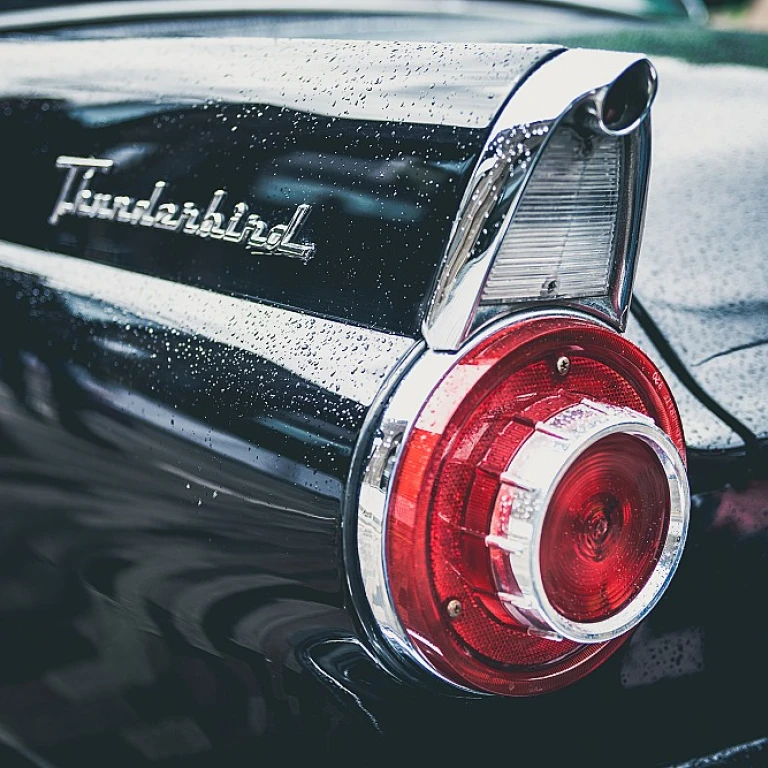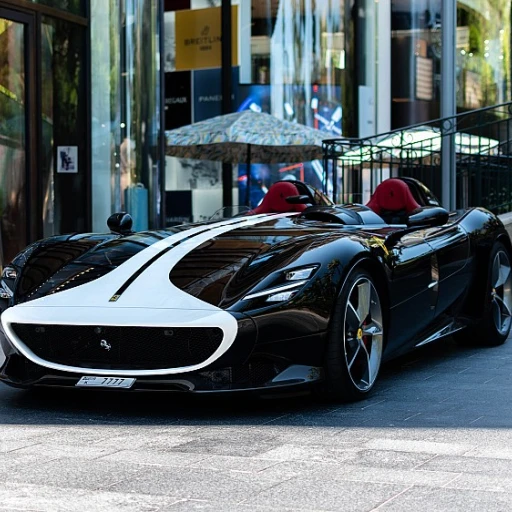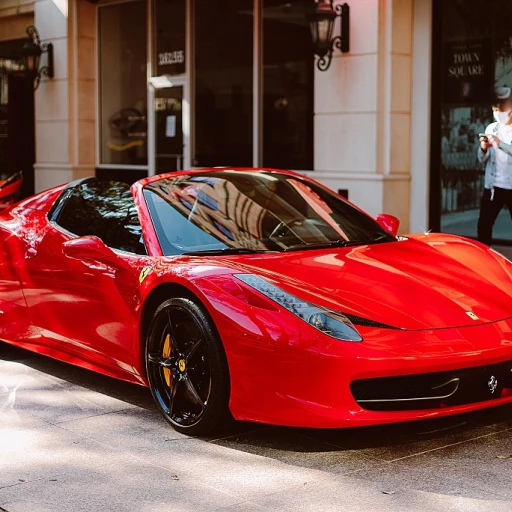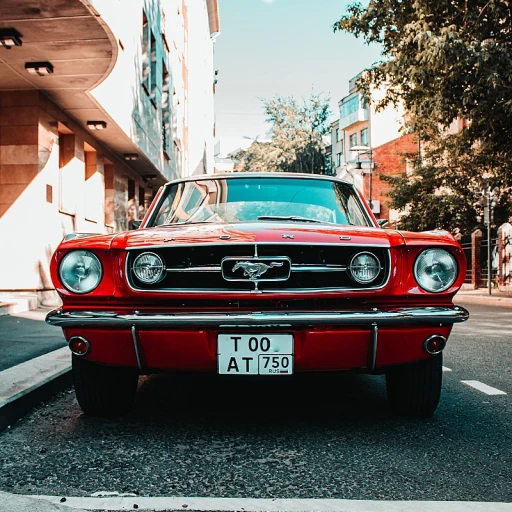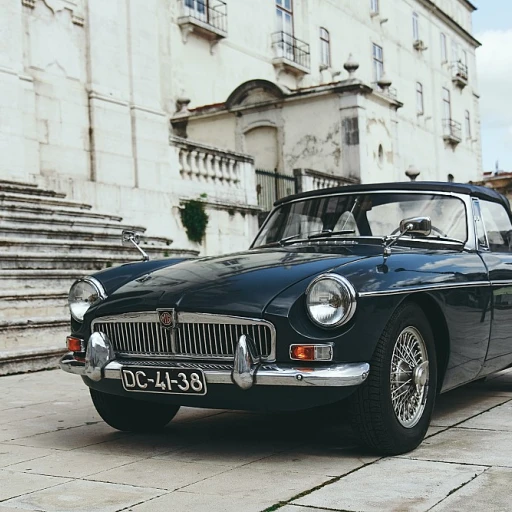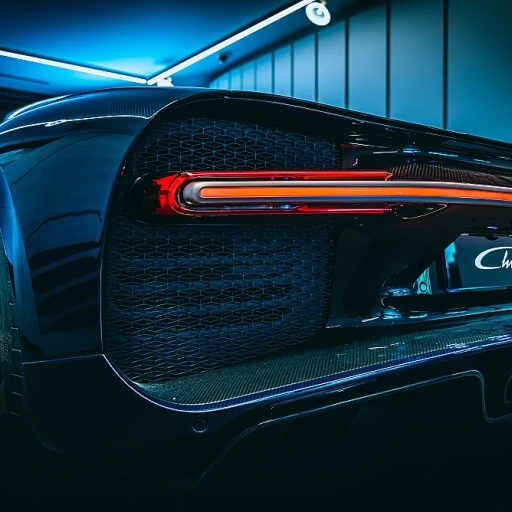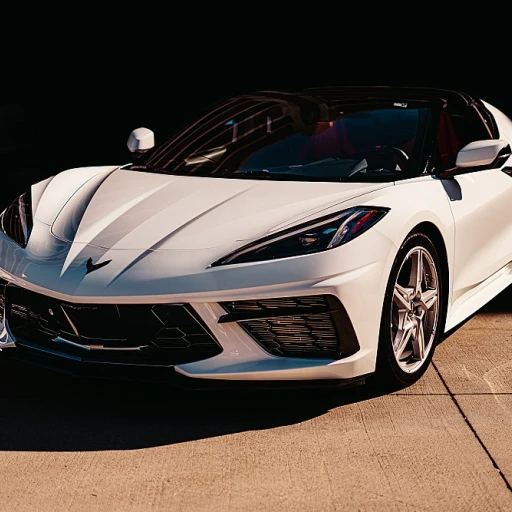
Understanding luxury car maintenance costs
Factors contributing to luxury car maintenance costs
When diving into the world of luxury cars, it's essential to understand that they come with their own set of maintenance needs and costs. According to a report from AAA, owning and maintaining a luxury vehicle can cost up to $12,000 per year, a stark contrast to the average $8,469 for a standard vehicle. Higher quality parts, advanced technology, and specialized services often drive these costs up.
Advanced technology and specialized parts
Luxury cars, such as those from Mercedes-Benz, BMW, and Audi, often feature cutting-edge technology that, while providing superior performance, heaps on maintenance expenses. For instance, the BMW Series 3 is celebrated for its advanced electronics but requires frequent software updates and electronic system checks, which aren't cheap. Take the Tesla Model S, renowned for its sophisticated battery and electric drivetrains — its repair demands are unlike traditional combustion engines, raising the stakes for maintenance.
Brand-specific maintenance protocols
Different luxury brands have unique maintenance schedules and requirements. For example, Lexus is lauded for lower maintenance costs, averaging about $651 per year. In contrast, a Range Rover Sport from Land Rover, despite its premium status, has maintenance costs that can skyrocket, easily surpassing $1,200 annually. This disparity is due to the manufacturer's recommended upkeep and the complexity of parts.
Public perception and real-world impact
Luxury cars' market perception also plays a role in maintenance costs. A prestigious brand often charges more for its service and parts. According to Forbes, the Mercedes-Benz Class offers an elite driving experience but comes with high-priced maintenance plans. Similarly, the Porsche 911 might offer an exhilarating ride, but its upkeep pinches the wallet more than other brands. For more insights, learn about the secrets behind reliable luxury cars.
Regular maintenance versus major repairs
Regular maintenance, such as oil changes and tire rotations, can be pricey for luxury cars. For example, routine oil changes for a BMW can cost up to $200, significantly higher than the $50 for a standard car. However, it’s the major repairs that really impact the wallet. Experiencing a transmission failure can cost upwards of $7,000 for a vehicle like the Jaguar XF, reflecting the high cost of premium parts and specialized labor.
Top luxury cars with low maintenance costs
Low-maintenance luxury vehicles to consider
Let's start with Lexus, often considered a top contender in the segment of luxury cars that don’t break the bank with maintenance costs. Reports from Edmunds suggest that the Lexus ES and Lexus GS models rank high when you look at the scale of keeping maintenance costs low over ten years. According to YourMechanic, the average annual Lexus maintenance cost is around $551. This is significantly lower compared to other brands like BMW and Audi.
Talk about BMW, specifically the BMW 3 Series and 5 Series have been noted for lower-than-expected maintenance costs. A study from J.D. Power highlights that the BMW Series models usually involve annual maintenance costs of about $915. Keeping a BMW in prime condition does not require a fortune if properly maintained, and regular check-ups are followed.
Now, let’s shine the spotlight on Tesla. The Tesla Model S and Model 3 come with lower maintenance costs due to fewer moving parts compared to traditional vehicles. Consumer Reports points out that the average annual maintenance cost is around $600 for the Model S. However, it’s important to keep an eye on software updates and ensure battery health, which are crucial aspects of maintaining a Tesla.
Mercedes-benz options for budget-conscious luxury
When it comes to Mercedes-Benz, the Mercedes-Benz C-Class and Mercedes-Benz E-Class models stand out. A report by Carwow reveals that these models have appealingly low maintenance costs, averaging around $908 annually. The key here is to stick to a stringent maintenance schedule and not delay minor repairs, which can lead to expensive fixes later.
Let’s not forget Volvo. Known for safety and reliability, Volvo models like the Volvo XC60 or S60 offer affordable luxury maintenance. As per RepairPal, Volvo maintenance costs average around $769 per year, which is reasonable for luxury vehicles.
Other top picks for low maintenance costs
Audi has made strides in improving its maintenance costs, particularly with models like the Audi A4 and A6. According to Consumer Reports, the average yearly cost to maintain these models stands at an estimated cost of $987. Ensuring regular oil changes and timely servicing can help keep costs under control.
Finally, let's discuss Jaguar and its models like the Jaguar XE and XF. Studies on maintenance costs from Automd indicate that Jaguar’s investment in reliability has shown positive results, averaging about $880 annually.
Maintaining luxury cars doesn’t have to be an expensive ordeal. By choosing models that are known for their reliability and lower maintenance costs, it’s entirely possible to enjoy the luxury without excessive expenses. Remember, regular maintenance is key to preserving the value and performance of any luxury car.
For more on preserving the value of luxury cars, check out the art of preserving value is regular maintenance the secret to luxury car investment.
Expert insights on maintaining luxury cars
Insightful advice from industry experts on maintaining luxury cars
One way to manage luxury car maintenance costs is to take advice straight from industry pros. Automotive experts tend to emphasize a few key practices when asked about the cheapest luxury car to maintain.Regular maintenance is key
According to Jeff Huang, chief mechanic at AutoNation, sticking to a regular maintenance schedule can save owners thousands of dollars over the years. He says, "Regular maintenance is crucial. Simple things like oil changes, tire rotations, and brake checks can prevent expensive repairs down the line." This is particularly important for brands known for high maintenance costs like BMW and Mercedes-Benz.A study by CarEdge suggests that taking care of your luxury car from the get-go can lower long-term costs. For example, a 2017 survey showed that a typical BMW owner who followed the recommended maintenance schedule spent nearly 20% less on repairs over ten years compared to those who neglected regular check-ups.
Choose models known for their reliability
Luxury brands like Lexus and Acura are repeatedly praised for their low maintenance needs. John Nielsen, director of AAA's Automotive Engineering and Repair, states, "Luxury vehicles such as the Lexus ES and Acura ILX are designed with long-term reliability in mind, which directly translates into lower annual maintenance costs." The Lexus ES, particularly, is famous for its lower-than-average repair costs, even over ten years of ownership.Avoid major repairs by acting early
Taking action before small issues become major repairs can save substantial amounts. According to a report from RepairPal, addressing issues like minor oil leaks early can prevent costly engine repairs later on. This often involves replacing parts early, which might seem expensive upfront but costs significantly less than major powertrain repairs.For example, Tesla models are notorious for being expensive to fix. Addressing electrical issues early on, well before they escalate, can save Tesla owners significant sums in the long run. Regularly scheduled software updates and small part replacements are crucial for keeping these high-tech vehicles in top shape.
Understanding the value of certified pre-owned (CPO) programs
Many experts recommend considering Certified Pre-Owned (CPO) luxury cars. CPO programs, offered by most luxury brands, often include extended warranties and comprehensive inspections. This can greatly reduce maintenance costs, especially in the first few years of ownership. According to auto industry analyst Lauren Fix, "The additional cost of a CPO luxury car is often offset by the reduction in maintenance and repair costs due to the comprehensive support these programs provide." Ashton Niemeyer, a senior analyst at Kelley Blue Book, adds that programs like Lexus' CPO include a 161-point inspection and factory-backed warranty, providing peace of mind and lower maintenance costs overall. While these insights aim to equip luxury car owners with the knowledge to maintain their vehicles economically, remember to periodically review and update your maintenance schedule based on your vehicle's specific needs and the manufacturer's recommendations. Navigating the opulence of city driving can be a delight when your luxury car is in top-notch condition.Case studies: affordable luxury car maintenance
Stories of luxury car owners saving on maintenance
When it comes to maintaining luxury cars, some brands and models stand out for their more affordable upkeep. Let's take a closer look at some real-world experiences that make these vehicles a smart choice for those who crave luxury without breaking the bank.
One remarkable example is the Lexus ES. This model is often hailed for its low maintenance costs in comparison to other luxury cars. A study by YourMechanic found that across ten years, the average maintenance cost for a Lexus ES was around $5,500. Cindy, a proud owner of a Lexus ES, shared, "I rarely have to take my car in for anything more than oil changes and tire rotations. This car has been incredibly economical to maintain."
Another standout is the BMW 3 Series, particularly models from the early 2010s. Despite BMW's reputation for being expensive to maintain, the 3 Series proves otherwise. John, who drives a 2012 BMW 328i, noted, "I was initially worried about maintenance costs, but aside from a few minor repairs, the costs have been lower than expected. It's definitely more budget-friendly than its competitors." A report published by Edmunds backs this, indicating that the BMW 3 Series has surprisingly low repair and maintenance expenses compared to other German luxury cars.
Moving to electric vehicles (EVs), the Tesla Model 3 shines brightly. The absence of a traditional engine means fewer parts that need regular servicing. According to data from CarEdge, the Model 3's projected maintenance costs over a five-year period are significantly lower than those of similar luxury sedans. Sarah, a Tesla Model 3 owner, attested, "I wasn't sure about EVs at first, but the Tesla has been a breeze to maintain. There's no need for oil changes, and the regenerative braking system means my brake pads last longer."
But it's not all roses. There are brands such as Land Rover and Jaguar, which are notorious for high maintenance costs. David, who owned a Land Rover Range Rover Sport, mentioned, "While I loved the vehicle, the frequent repairs and high cost of parts eventually led me to sell it. The maintenance costs were simply unsustainable for me." A Consumer Reports study aligns with this experience, showing that Land Rover consistently ranks lower in terms of reliability, translating into higher maintenance costs over time.
Ultimately, choosing a luxury car involves balancing your love for luxury with a realistic view of repair and maintenance expenses. By selecting models known for their reliability and lower upkeep costs, you can indulge in luxury without the fear of exorbitant bills.
For an in-depth look at the hidden costs of owning expensive luxury cars, check out this resource.
Comparing maintenance costs across luxury brands
Maintenance costs: comparing luxury brands
When it comes to maintenance costs, not all luxury cars are created equal. Some brands, like Lexus, have a reputation for being more affordable to maintain compared to others like BMW or Mercedes-Benz.
According to a study by YourMechanic, a platform for car repair, Lexus has an average yearly maintenance cost of about $551. When you compare that to BMW, which averages around $1,581 per year, the difference is quite significant. Consider the Lexus ES, a model known for its reliability and low repair costs, versus the BMW 5 Series, which tends to have higher maintenance needs.
Another brand to look at is Audi. An Audi A4, for instance, can cost about $1,143 per year in maintenance, which is still less than many other luxury brands but more than Lexus. Audi ranks higher in terms of performance but it does come at a cost of more frequent and expensive repairs.
Then there's Tesla. Despite being an electric vehicle (EV) manufacturer, Tesla's maintenance costs can be quite high due to parts availability and service network limitations. For example, a Tesla Model S can cost around $832 yearly, but this can vary based on mileage and usage. Uniquely, Tesla requires fewer oil changes but may need more attention in areas like battery health and software updates.
Land Rover and Porsche, two other popular luxury brands, also carry high maintenance costs. Land Rover's Range Rover Sport, for instance, averages $1,258 per year, partly due to the expensive parts and sophisticated technology it incorporates. Porsche, famous for its sports cars, has its models like the Porsche 911 averaging $1,192 annually in maintenance, making it one of the more expensive brands to maintain.
For more details on understanding these costs and finding the right vehicle, check out low maintenance luxury cars: finding elegance without the hassle.
In a unique position, Volvo has successfully marketed itself as a lower-cost luxury option, with the Volvo S60 averaging around $769 per year. They offer affordable luxury without the hefty price tag for repairs. This makes Volvo an attractive option for those looking for a balance between cost and luxury.
When comparing these brands over a ten-year ownership period, it's important to consider not just the initial purchase price but also these ongoing maintenance costs, which can add up significantly. Lexus and Volvo consistently rank among the lowest in maintenance costs, making them a practical choice for long-term luxury car ownership.

